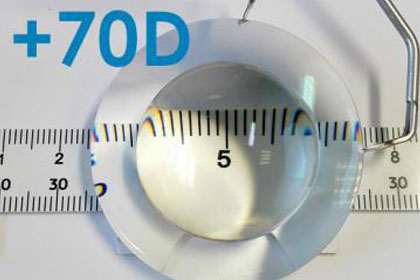
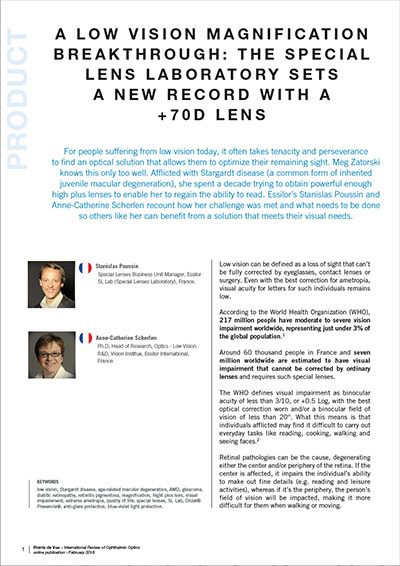 Click here to read the article
Click here to read the article
For people suffering from low vision today, it often takes tenacity and perseverance to find an optical solution that allows them to optimize their remaining sight. Meg Zatorski knows this only too well. Afflicted with Stargardt disease (a common form of inherited juvenile macular degeneration), she spent a decade trying to obtain powerful enough high plus lenses to enable her to regain the ability to read. Essilor’s Stanislas Poussin and Anne-Catherine Scherlen recount how her challenge was met and what needs to be done so others like her can benefit from a solution that meets their visual needs.
Article from the magazine "Point de vue"


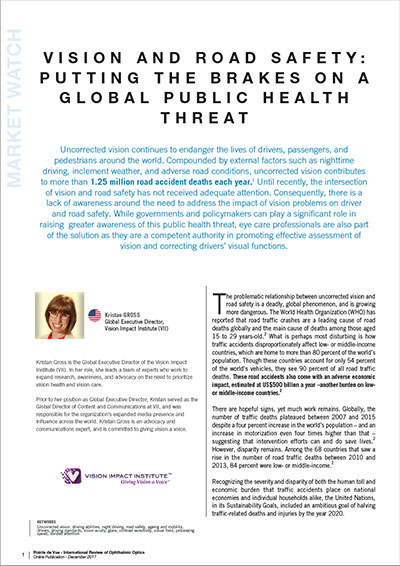 Click here to read the article
Click here to read the article
Uncorrected vision continues to endanger the lives of drivers, passengers, and pedestrians around the world. Compounded by external factors such as nighttime driving, inclement weather, and adverse road conditions, uncorrected vision contributes to more than 1.25 million road accident deaths each year. Until recently, the intersection of vision and road safety has not received adequate attention. Consequently, there is a lack of awareness around the need to address the impact of vision problems on driver and road safety. While governments and policymakers can play a significant role in raising greater awareness of this public health threat, eye care professionals are also part of the solution as they are a competent authority in promoting effective assessment of vision and correcting drivers’ visual functions.
Article from the magazine "Point de vue"


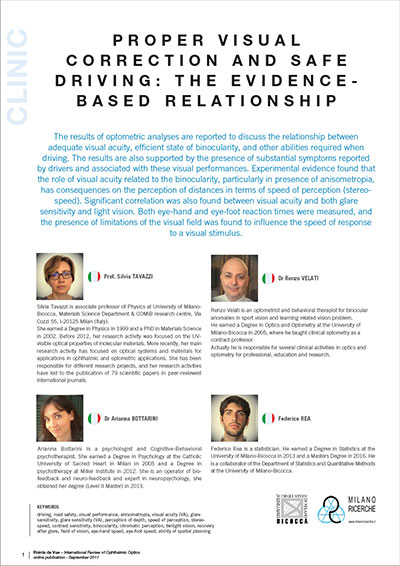 Click here to read the article
Click here to read the article
The results of optometric analyses are reported to discuss the relationship between adequate visual acuity, efficient state of binocularity, and other abilities required when driving. The results are also supported by the presence of substantial symptoms reported by drivers and associated with these visual performances. Experimental evidence found that the role of visual acuity related to the binocularity, particularly in presence of anisometropia, has consequences on the perception of distances in terms of speed of perception (stereospeed). Significant correlation was also found between visual acuity and both glare sensitivity and light vision. Both eye-hand and eye-foot reaction times were measured, and the presence of limitations of the visual field was found to influence the speed of response to a visual stimulus.
Article from the magazine "Point de vue"


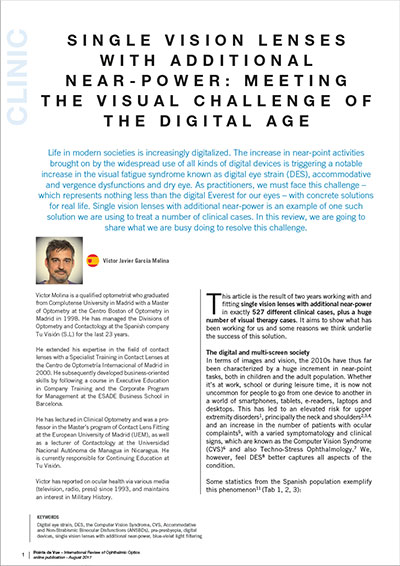 Click here to read the article
Click here to read the article
Life in modern societies is increasingly digitalized. The increase in near-point activities brought on by the widespread use of all kinds of digital devices is triggering a notable increase in the visual fatigue syndrome known as digital eye strain (DES), accommodative and vergence dysfunctions and dry eye. As practitioners, we must face this challenge – which represents nothing less than the digital Everest for our eyes – with concrete solutions for real life. Single vision lenses with additional near-power is an example of one such solution we are using to treat a number of clinical cases. In this review, we are going to share what we are busy doing to resolve this challenge.
Article from the magazine "Point de vue"


